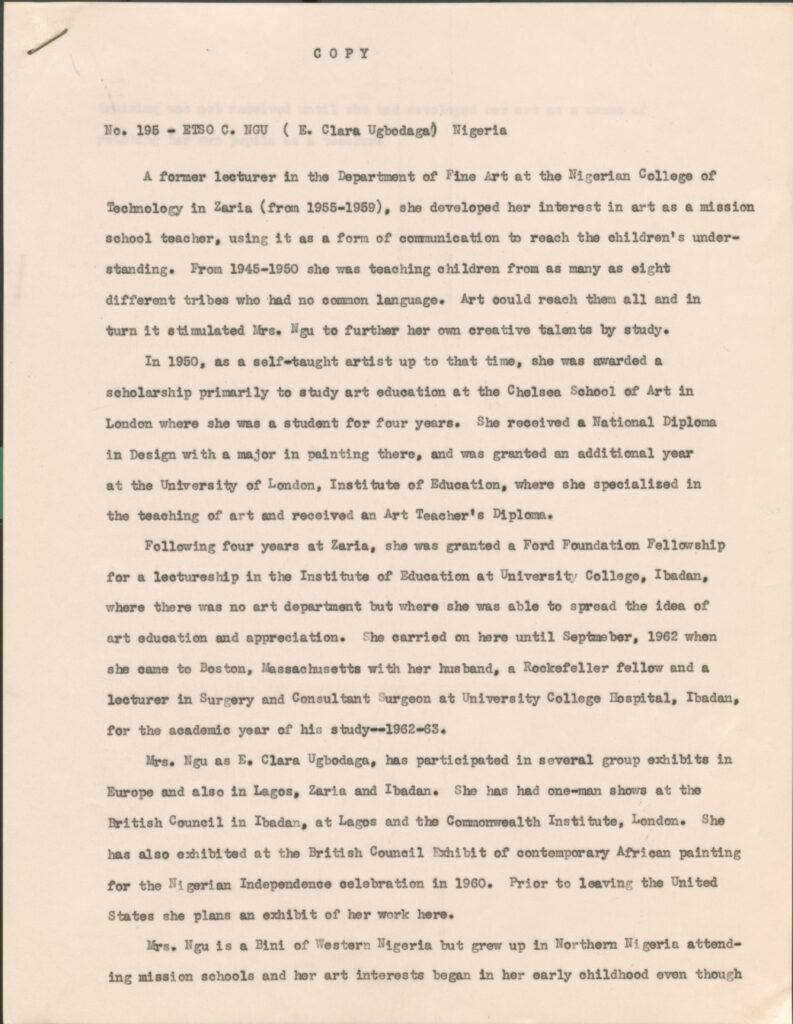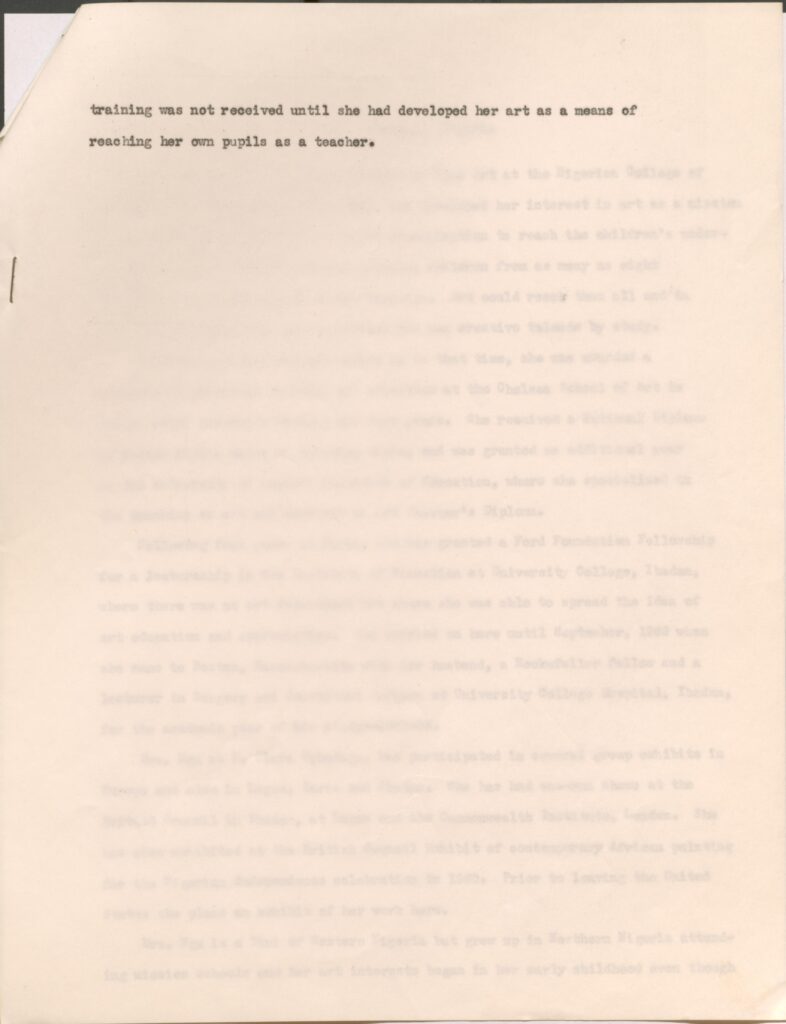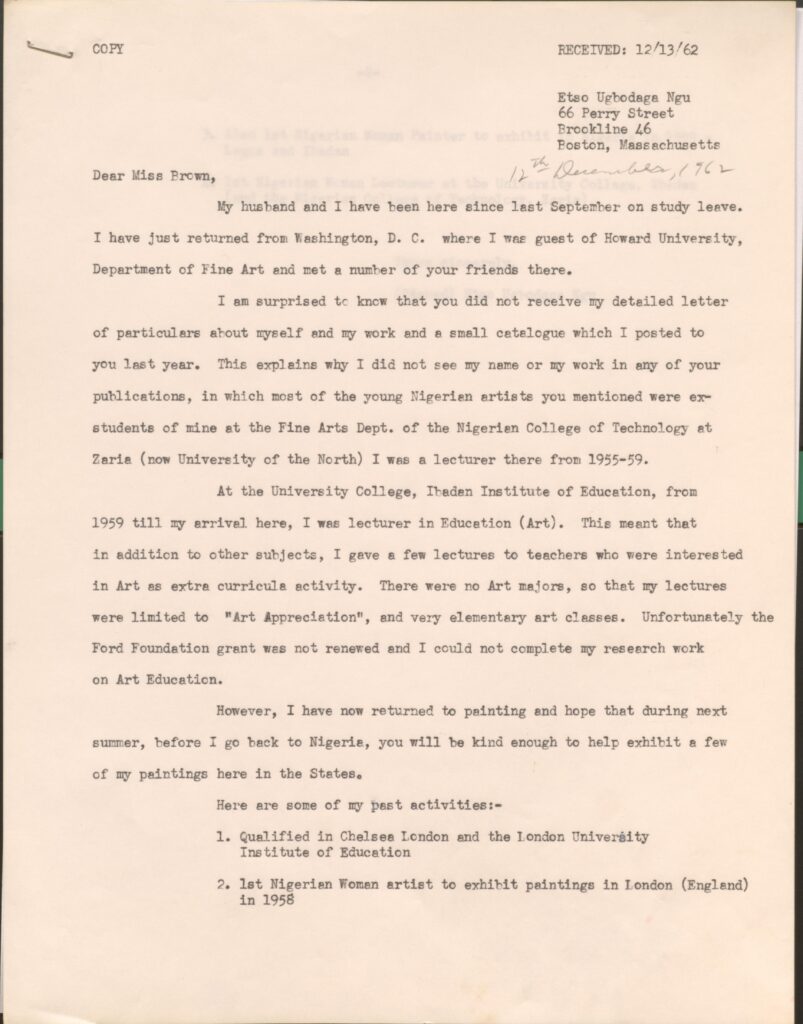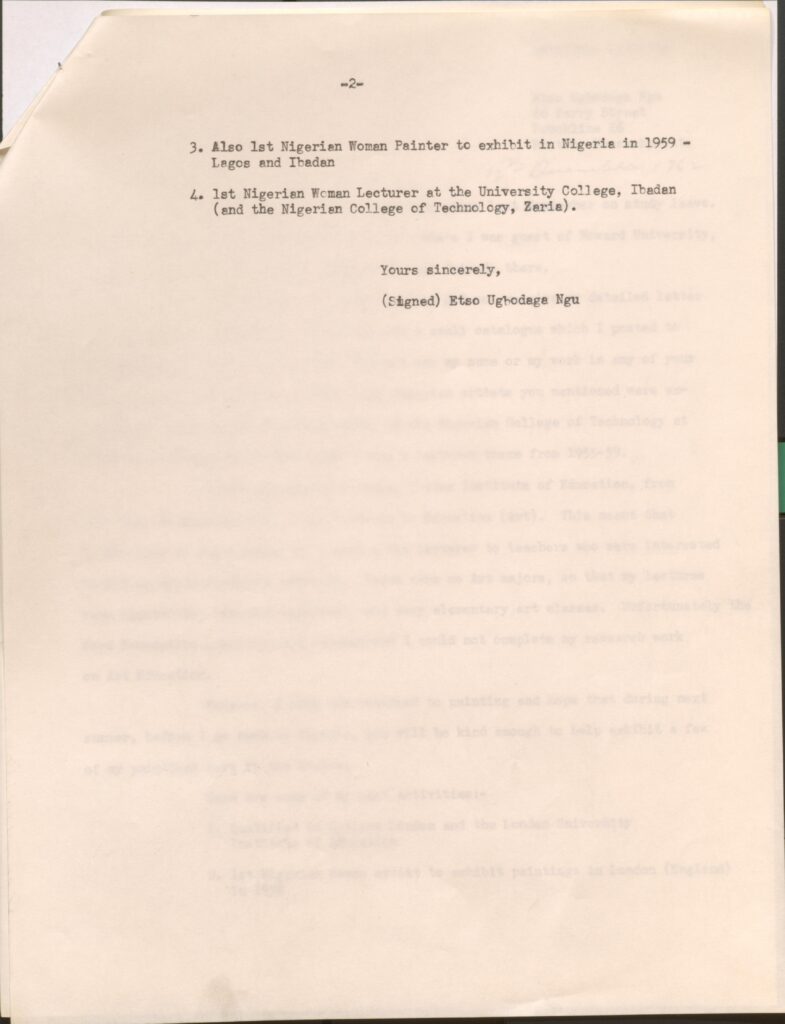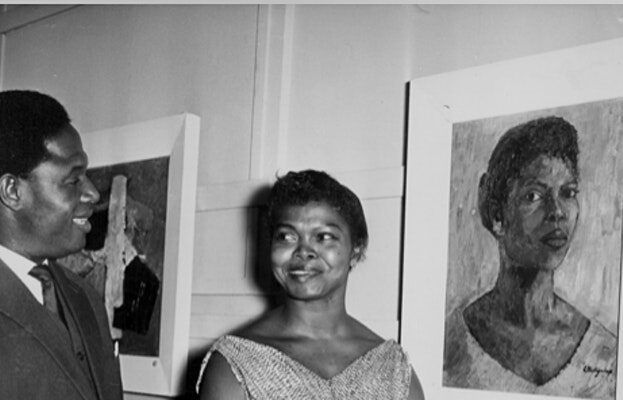
Clara Etso Ugbodaga-Ngu
Clara Etso Ugbodaga-Ngu was born in northern Nigeria and was a descendant of the Bini people of western Nigeria. Her interest in art began at an early age. She was inspired to teach art in mission schools, using it to bridge language gaps between children from different cultural backgrounds. She became the first formally trained Nigerian art educator after receiving diplomas from the Chelsea School of Art and the University of London in England. Ugbodaga-Ngu’s students included Solomon Wangboje, Uche Okeke, Simon Okeke, and Bruce Onobrakpeya (all of whom are represented in the Harmon Foundation modern African art collection at Hampton University Museum). She participated in group and solo exhibitions in Nigeria, the United States, and Europe. She was the first female Nigerian artist to have a solo exhibition in London. Ugbodaga-Ngu served as an inspiration to other Nigerian art teachers and artists and aided in the advancement of postcolonial modern art in Nigeria.
Clara Etso Ugbodaga-Ngu merged European art traditions with African motifs and forms drawn from several cultures within Nigeria. She might have become familiar with numerous Nigerian cultures and their social practices from 1945 to 1950 when she taught children from various ethnic groups who spoke different languages. Ugbodaga-Ngu used art as a common language to engage and teach her students. Her use of art in the classroom inspired her to practice art as a hobby, which later became her career.
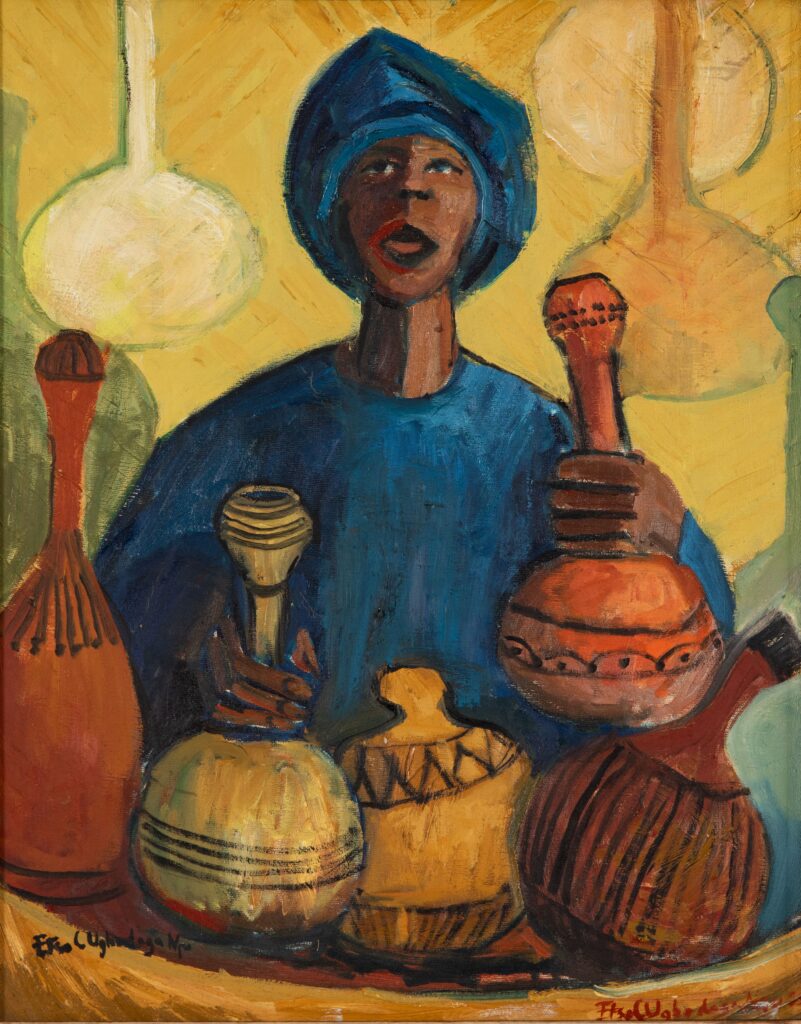
“Elemu” Yoruba Palm Wine Seller
In her painting “Elemu” Yoruba Palm Wine Seller, Ugbodaga-Ngu portrays a woman in traditional Yoruba clothing selling calabashes, or dried-out gourds, filled with palm wine. The painting features multiple calabashes in the foreground and calabash silhouettes in the background. The calabashes are colorful, and each has a different pattern. The seller looks up and holds two in her hand, seemingly to offer the palm wine to her customers. This painting shows an economic activity undertaken by Yoruba women, a theme Ugbodaga-Ngu also explored in other works. “Elemu” Yoruba Palm Wine Seller refers to the selling and drinking of palm wine, a traditional beverage in Yoruba culture. The palm wine seller, Elemu in the Yoruba language, is depicted wearing a blue gele and buba, traditional attire for the Yoruba people.
